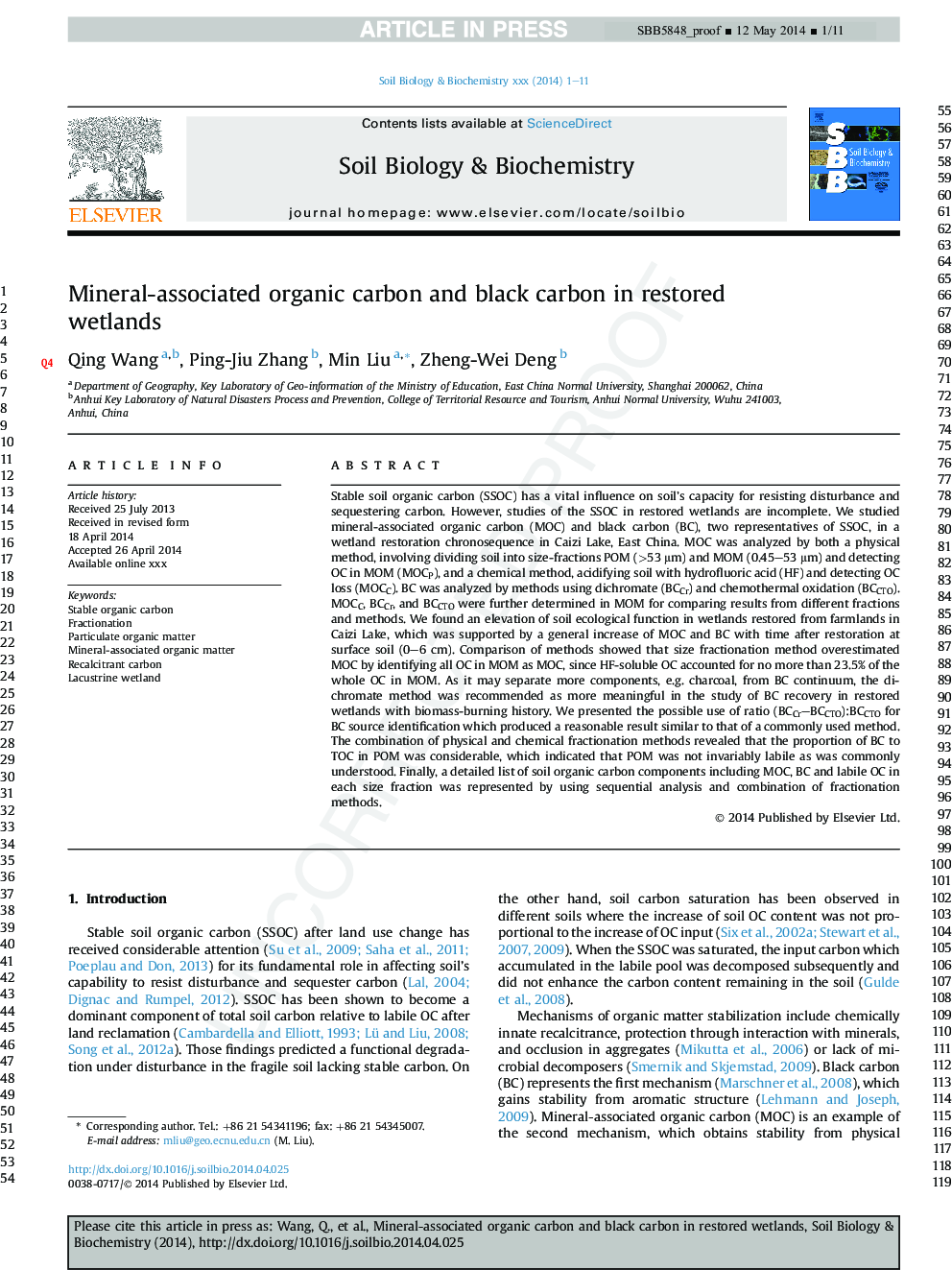| Article ID | Journal | Published Year | Pages | File Type |
|---|---|---|---|---|
| 8364772 | Soil Biology and Biochemistry | 2014 | 11 Pages |
Abstract
Stable soil organic carbon (SSOC) has a vital influence on soil's capacity for resisting disturbance and sequestering carbon. However, studies of the SSOC in restored wetlands are incomplete. We studied mineral-associated organic carbon (MOC) and black carbon (BC), two representatives of SSOC, in a wetland restoration chronosequence in Caizi Lake, East China. MOC was analyzed by both a physical method, involving dividing soil into size-fractions POM (>53 μm) and MOM (0.45-53 μm) and detecting OC in MOM (MOCP), and a chemical method, acidifying soil with hydrofluoric acid (HF) and detecting OC loss (MOCC). BC was analyzed by methods using dichromate (BCCr) and chemothermal oxidation (BCCTO). MOCC, BCCr, and BCCTO were further determined in MOM for comparing results from different fractions and methods. We found an elevation of soil ecological function in wetlands restored from farmlands in Caizi Lake, which was supported by a general increase of MOC and BC with time after restoration at surface soil (0-6 cm). Comparison of methods showed that size fractionation method overestimated MOC by identifying all OC in MOM as MOC, since HF-soluble OC accounted for no more than 23.5% of the whole OC in MOM. As it may separate more components, e.g. charcoal, from BC continuum, the dichromate method was recommended as more meaningful in the study of BC recovery in restored wetlands with biomass-burning history. We presented the possible use of ratio (BCCr-BCCTO):BCCTO for BC source identification which produced a reasonable result similar to that of a commonly used method. The combination of physical and chemical fractionation methods revealed that the proportion of BC to TOC in POM was considerable, which indicated that POM was not invariably labile as was commonly understood. Finally, a detailed list of soil organic carbon components including MOC, BC and labile OC in each size fraction was represented by using sequential analysis and combination of fractionation methods.
Keywords
Related Topics
Life Sciences
Agricultural and Biological Sciences
Soil Science
Authors
Qing Wang, Ping-Jiu Zhang, Min Liu, Zheng-Wei Deng,
